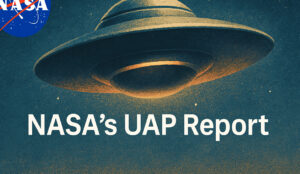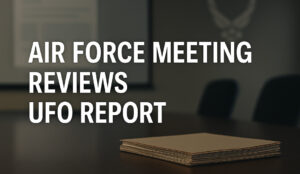In early 1953, U.S. Air Force officials met behind closed doors to respond to a sensitive issue that refused to disappear from American skies - unidentified flying objects.
The declassified memo titled “Meeting With Air Force Personnel Concerning Scientific Advisory Panel Report on UFOs” captures a moment when military leaders were forced to reconcile rising public concern with conflicting expert recommendations.
At the heart of the meeting was a question that had no clear answer: How should the government handle UFOs when scientists, servicemen, and civilians all see something different?
"The Air Force has been attacked for not releasing everything they have on unidentified flying objects."
📚 Background: The Robertson Panel’s Sobering Advice
The Scientific Advisory Panel, convened by the CIA and chaired by physicist Dr. H. P. Robertson, had recently issued a report downplaying the significance of UFO sightings.
It recommended that UFO reports be debunked through public education, not public alarm.
Air Force officers reviewing the report admitted it presented challenges.
While the panel advised a policy of downplaying the phenomenon, the Air Force was simultaneously under pressure to explain its ongoing investigations and radar-confirmed sightings.
"A serious attempt was made by the Panel to examine the possible danger of these sightings to national security."
🧠 Intelligence vs. Information Control
Internal friction becomes evident in the transcript. Intelligence officers expressed concern that excessive secrecy would fuel speculation, while scientific advisors insisted that misinterpretations of known phenomena were the primary culprit.
Still, the memo reveals that some Air Force personnel weren’t convinced all sightings were explainable.
This created tension between those advocating a closed, controlled narrative, and others who wanted greater transparency.
Key points of discussion included:
-
Public skepticism fueled by gaps in released information
-
The risk of enemy exploitation of mass UFO hysteria
-
Calls for improved inter-agency coordination and data sharing
🗣️ Managing Public Perception
One striking takeaway is how seriously the Air Force took the psychological and social dimensions of UFO reports.
Officials feared that continued public fascination, if left unchecked, might disrupt civil or military operations.
The proposed solution was a combination of:
-
Increased scientific education campaigns
-
Use of mass media to reframe unexplained phenomena
-
Quietly reducing the visibility of military investigations
"This recommendation has been misinterpreted as suggesting that the public be ridiculed… that is not the intent."
🔍 The Struggle Between Clarity and Control
This meeting did not produce new revelations about extraterrestrial craft.
Instead, it shows a military establishment wrestling with optics, uncertainty, and credibility.
By 1953, UFOs were no longer fringe curiosities-they were an institutional challenge.
Whether natural, psychological, or something more, the phenomenon had become impossible to ignore.
And so, amid layers of classification and expert disagreement, the Air Force worked not just to investigate what was seen-but to manage how the public would remember it.






